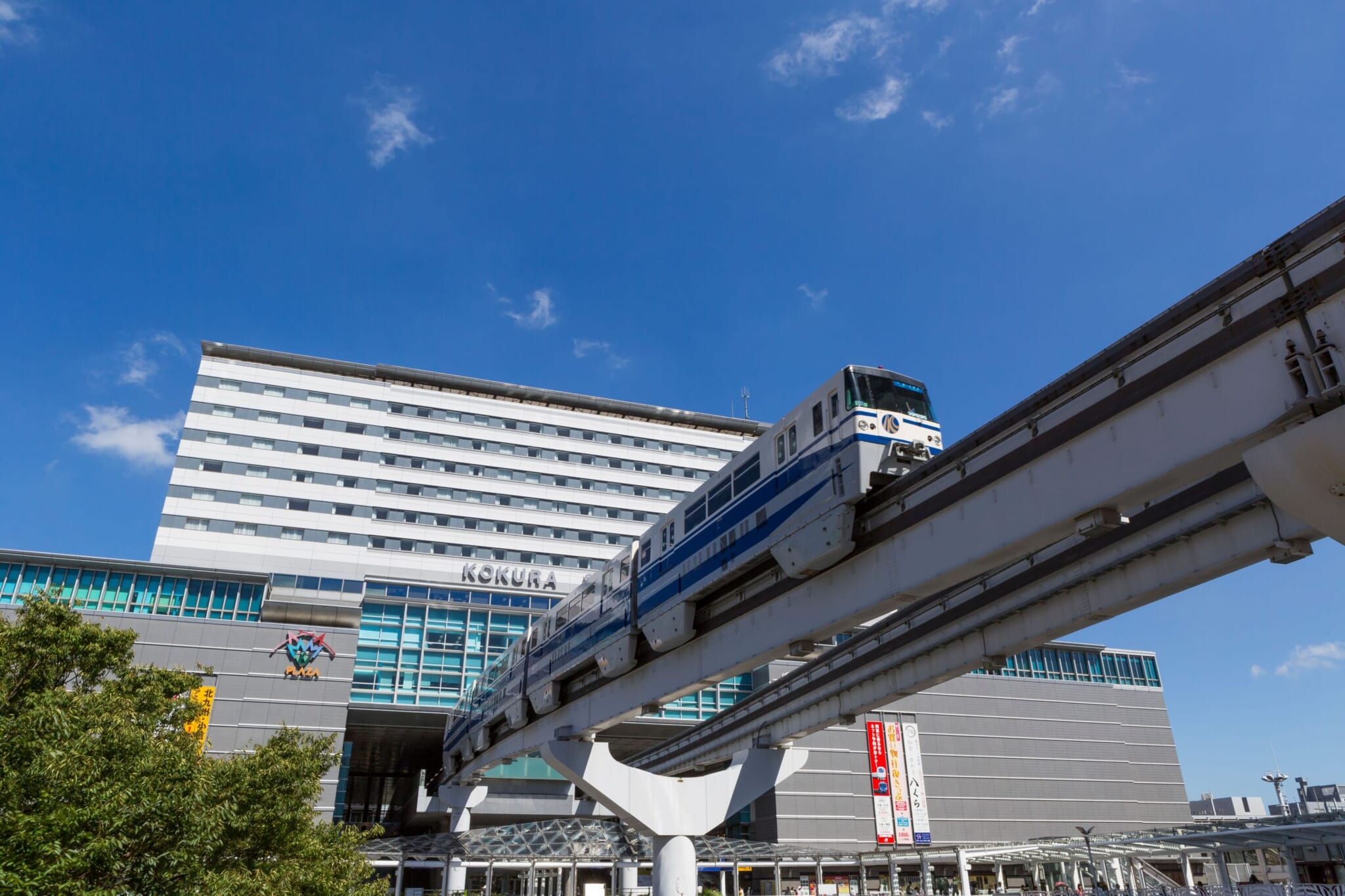Since days of old, Kitakyushu has been considered the gateway to Kyushu, the third-largest of Japan’s five main islands. It makes sense, then, that your exploration begins here and, more specifically, in the part of the city that was once the castle town of Kokura. Now split into two wards — the urban Kokurakita in the north and the relatively rural Kokuraminami in the south— the old Kokura area is easily traversed via the quick, convenient and eco-friendly Kitakyushu Monorail. Of course, before boarding the monorail, you’ll have to get to Kitakyushu. Not to worry — the city’s Kokura Station is on the Sanyo Shinkansen Line, slightly under an hour from Hiroshima Station and just over two hours from Shin-Osaka Station.
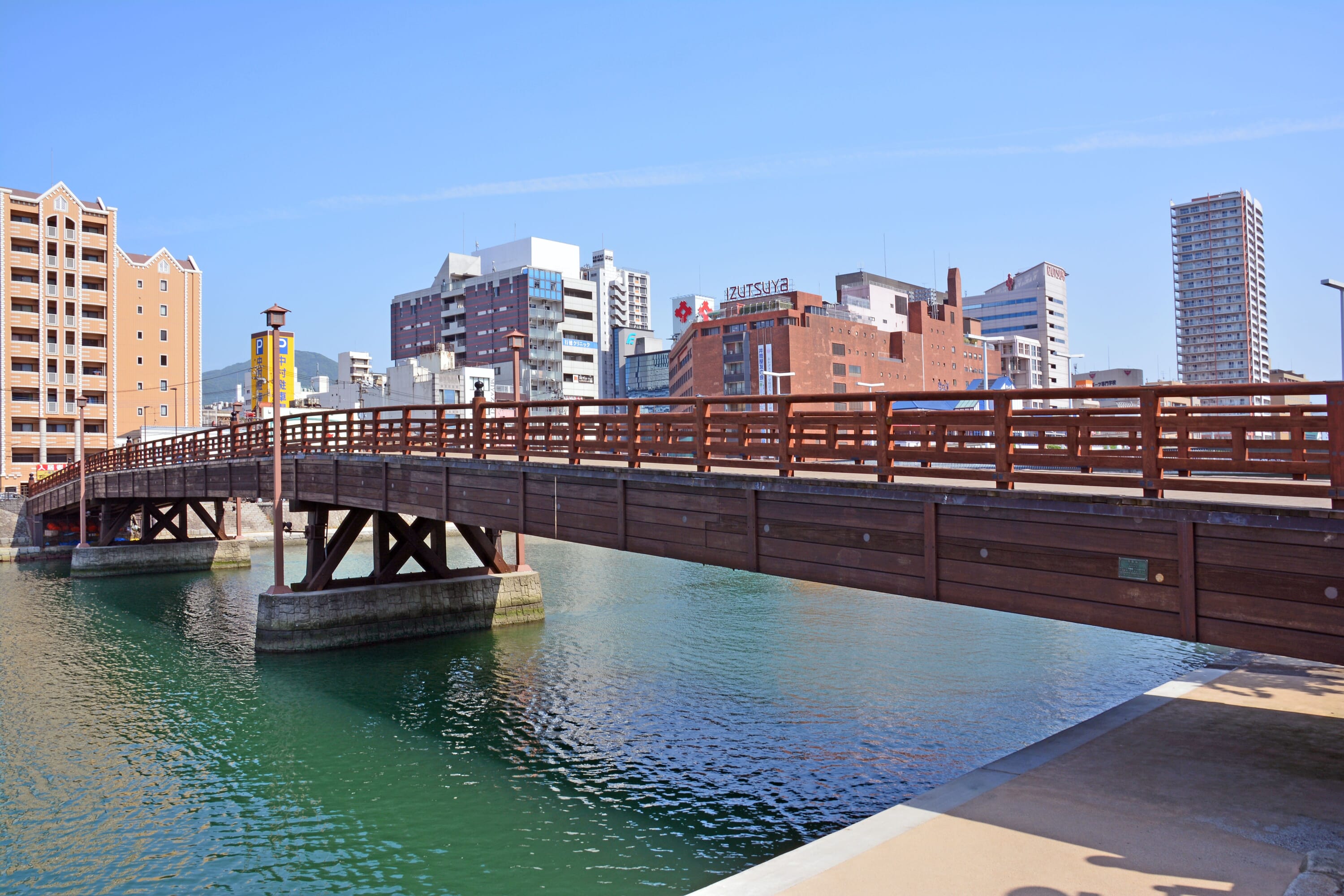
Tokiwabashi Bridge
Simple and Sustainable Tourism
The monorail, an impressive four-car workhorse that can fit 1,076 people per train at full capacity, takes 19 minutes to travel end to end. Frequent departures — every seven minutes during rush hour and 10 minutes at other times — make it ideal for leisurely exploration and a fundamental part of the city’s sustainability goals as it seeks to reduce the use of private cars. As a bonus, the line is less affected by adverse weather than other methods of transportation. Not only does the monorail provide easy access to a wide variety of attractions, it also supplies users with stunning views of the city. Pick up a day pass and head out for an adventure. With the Kitakyushu Monorail, this sublime city is yours to discover.
Before You Board
Prior to hopping aboard, take a few minutes to wander Kokura Station and its environs. For a slice of history, stroll across the reconstructed Tokiwabashi Bridge. During the Edo period, this was the beginning and end point for many roads that crossed Kyushu, and as such, it’s a fitting spot to start your exploration. If you’re interested in manga then head to the Kitakyushu Manga Museum in Aruaru City, a multi-floored shopping mall. If your trip coincides with the annual winter illumination event, be sure to visit the area during the evening hours for a brilliant display of color.
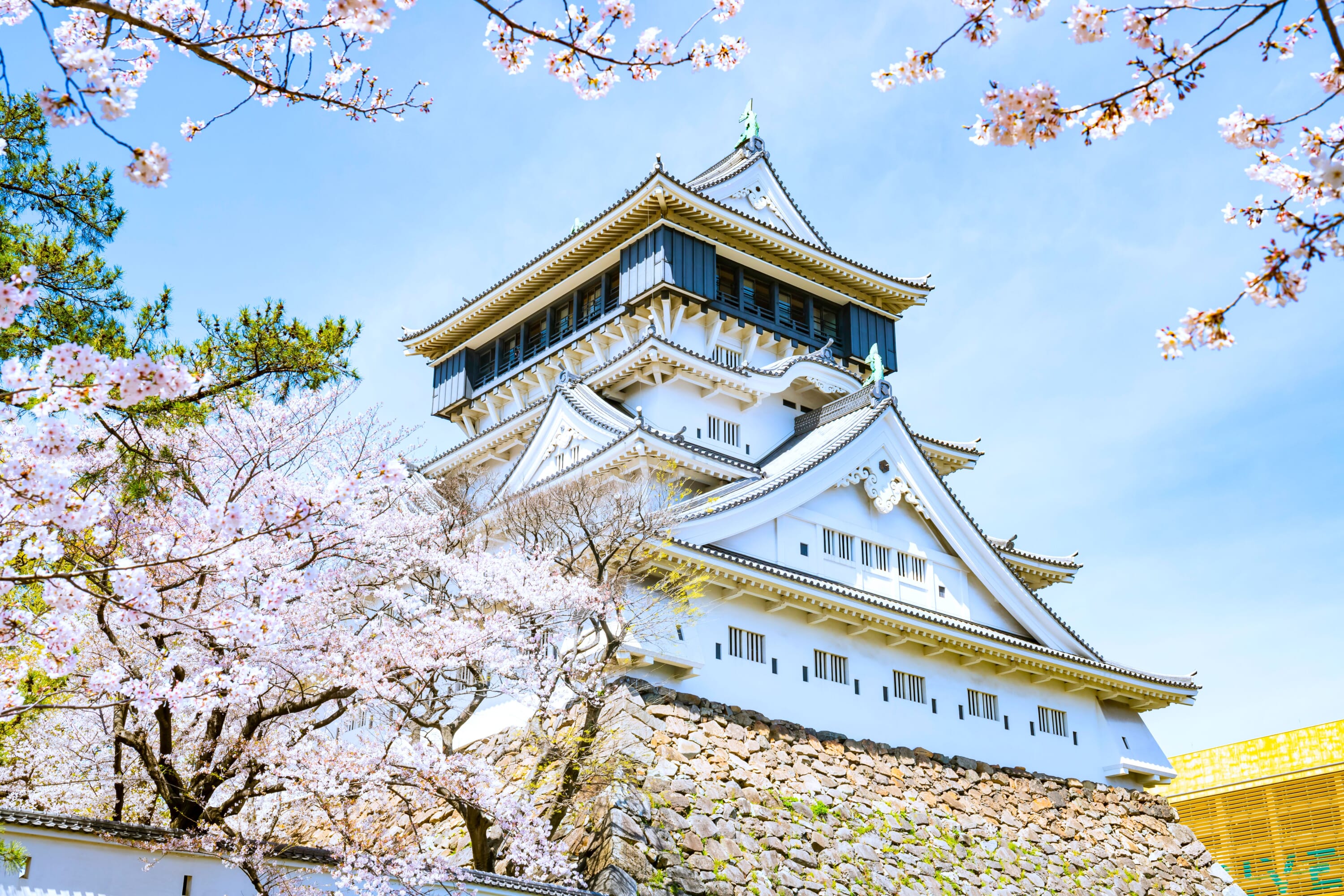
Kokura Castle
Heiwa-dori Station: History on Display
After embarking on your monorail journey at Kokura Station, travel just one stop to Heiwa-dori. From there, Kokura Castle, a 1959 reconstruction of the 1602 original, and its strolling garden are just a short walk away. The castle features interactive exhibits that introduce its history and the major players associated with the castle town, including the Hosokawa and Ogasawara families that ruled the region beginning in the early Edo period. The neighboring garden and reconstructed Edo-period samurai mansion off era relaxing spot to admire seasonal hues. Cultural experiences, including tea ceremony, can be enjoyed here too.
From late October to early November, the castle hosts the Kokura Castle Takeakari, an event that sees the grounds illuminated by more than 30,000 bamboo lanterns. The bamboo is sustainably harvested from abandoned forests and recycled afterwards. Other places of interest include the Uomachi Gintengai shopping arcade and the Mizukankyokan (River Museum). From April to October, the museum holds canoeing programs on the Murasaki River. Please note that reservations are required.
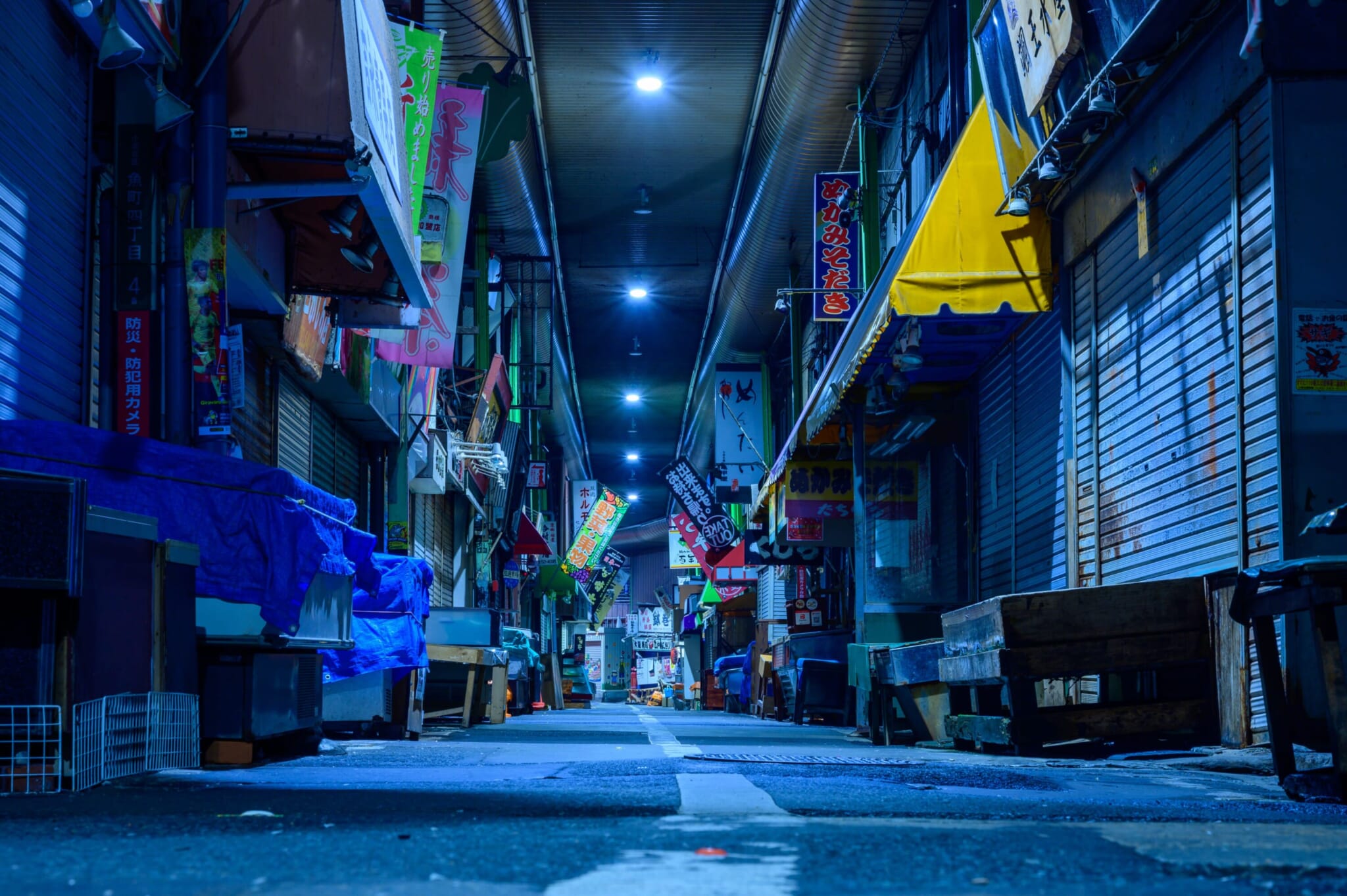
Tanga Market
Tanga Station: Market Amusement
Next up is Tanga Ichiba market, known as the “kitchen of Kitakyushu.” This is an excellent destination, rain or shine, as the narrow main street of the market is covered. The market, which currently boasts around 120 vendors, was established approximately 100 years ago. As you explore, you’ll be mingling with locals shopping for prepared dishes, fresh seafood and produce. While in the market, stop by some kaku-uchi, which are liquor stores where you can buy drinks by the glass to sip in-store while standing. Visitors are able to sample regional sake, shochu and a bit of local culture. This style of imbibing is said to have originated in Kitakyushu in the early 20th century.
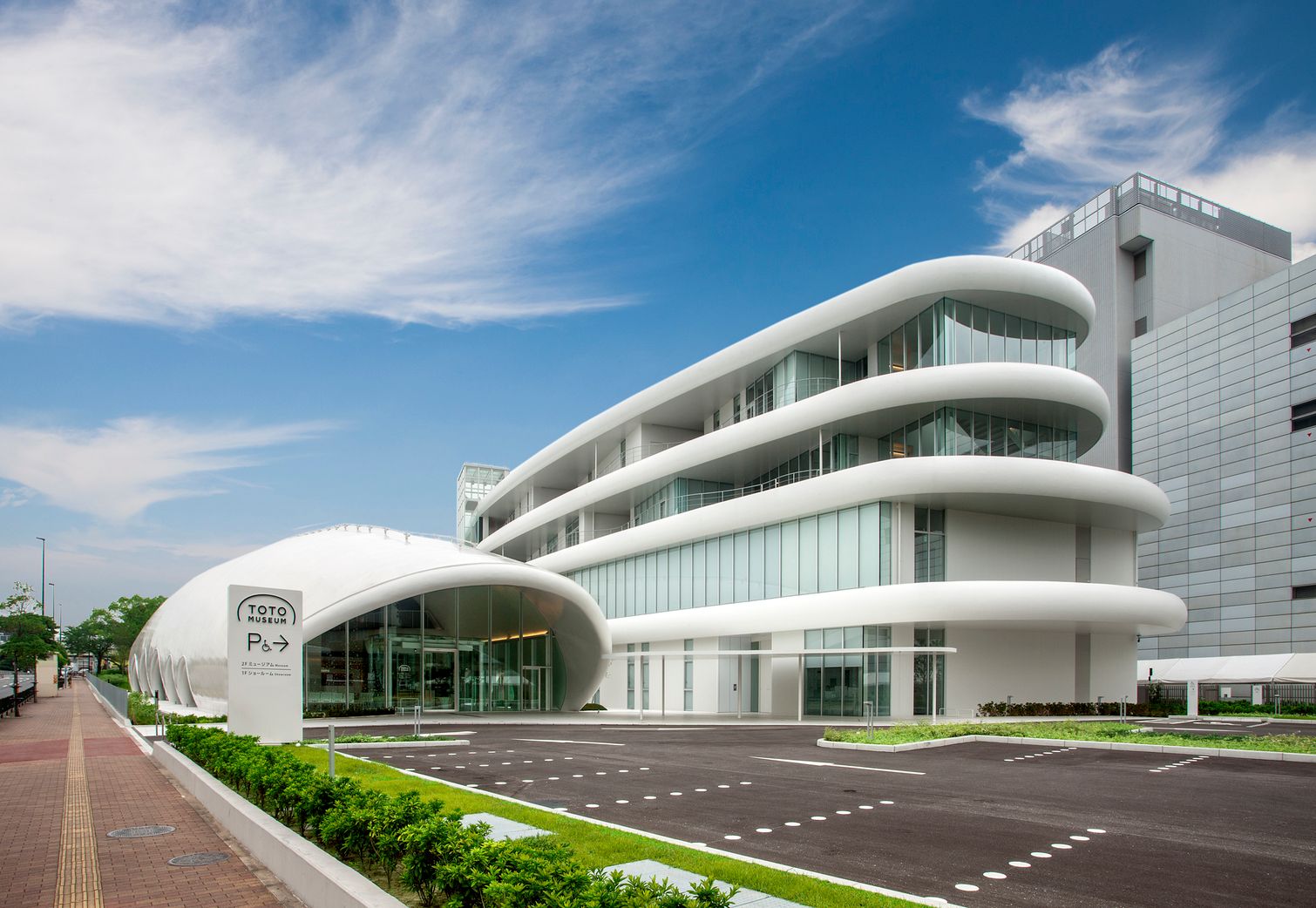
Toto Museum
Kawaraguchi Mihagino Station: Porcelain Perfection
Japan is world-famous for its toilets, and the next stop will see you plunging into the chronicles of the commode, from traditional squatters to today’s high-tech toilets, at the Toto Museum. Toto, originator of the luxury bidet, introduces you to its history in addition to that of the toilet. Exhibitions display products created by the company, from faucets and fittings to Toto’s Washlet. If toilets aren’t your thing, make your way to the Kitakyushu Media Dome, home of Japan’s first cycling racetrack, to catch high-speed action on two wheels.
Katano Station to Tokurikikodan-mae Station: Admiring the View
Industrial tourism enthusiasts will want to find themselves a spot at the very front of the train for the next portion of the trip, for it’s through the front window that the best views can be had. From Katano Station, the monorail sails over an elevated railway. With good timing, you’ll glide over a Hitahikosan Line train as it speeds over the city.
A truly fascinating stretch of track is that between Jono Station and Kitagata Station. There, the monorail runs beneath and parallel to an expressway. In fact, the two pieces of transportation infrastructure share the same supports and were built simultaneously. If architecture is your passion, look eastward — to the left when traveling outbound from Kokura Station — as you zip between Moritsune and Tokuriki kodan-mae stations. The hilly nature of Kitakyushu was clearly no match for developers, who built sloped apartment blocks all down the hillside.
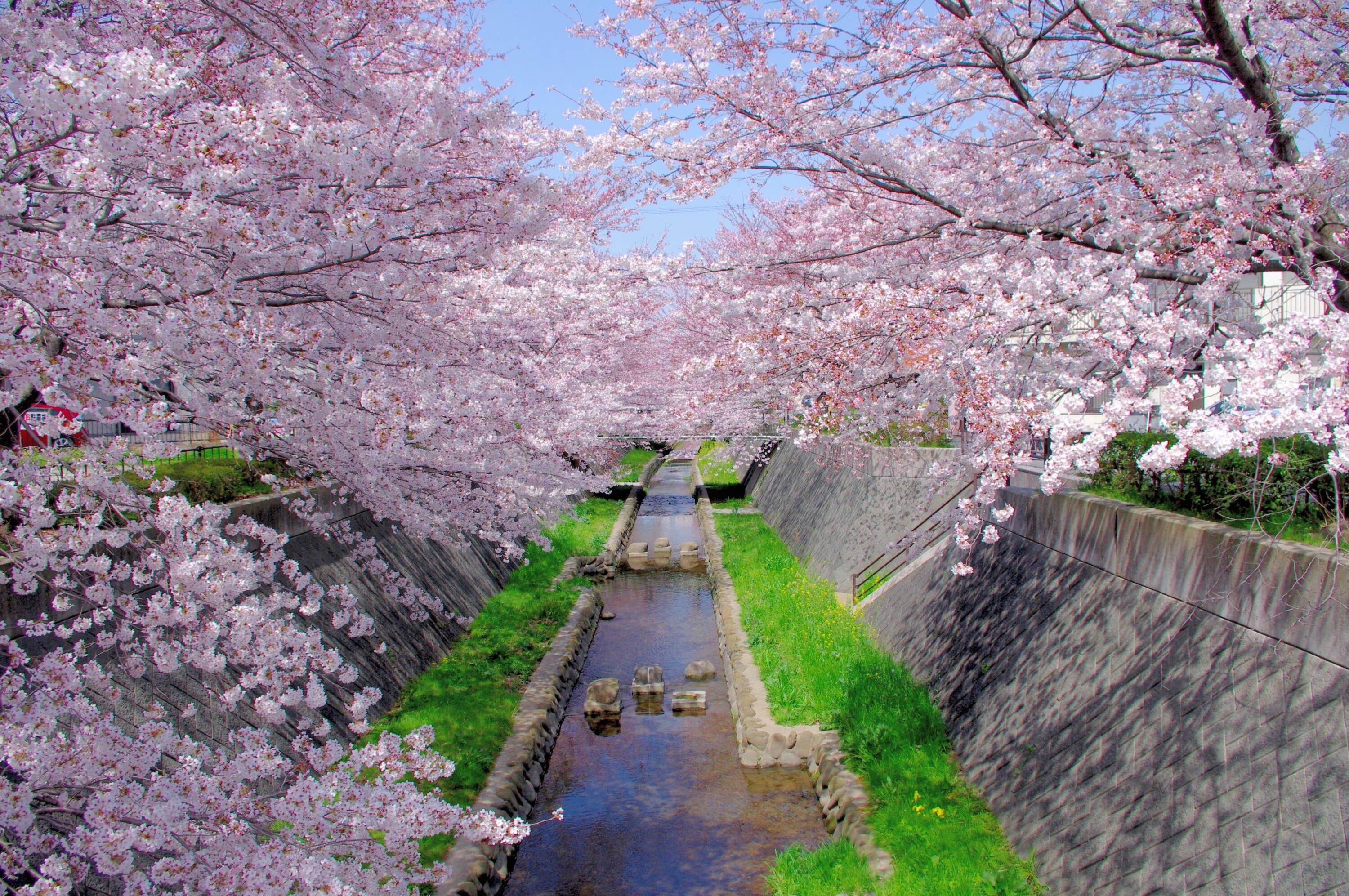
Sakura Along the Shii River
Tokuriki kodan-mae Station: Sakura Splendor
During cherry blossom season, disembarking at Tokuriki kodan-mae is a must. Just a brief walk will bring you to the Shii River, along which a dazzling display of blossoms extends. Enjoy a short stroll under frothy clouds of gentle pink before returning to Tokuriki kodan-mae, or continue along the river to Shii Station, from where you can travel back one station to Tokuriki Arashiyamaguchi, your next destination.
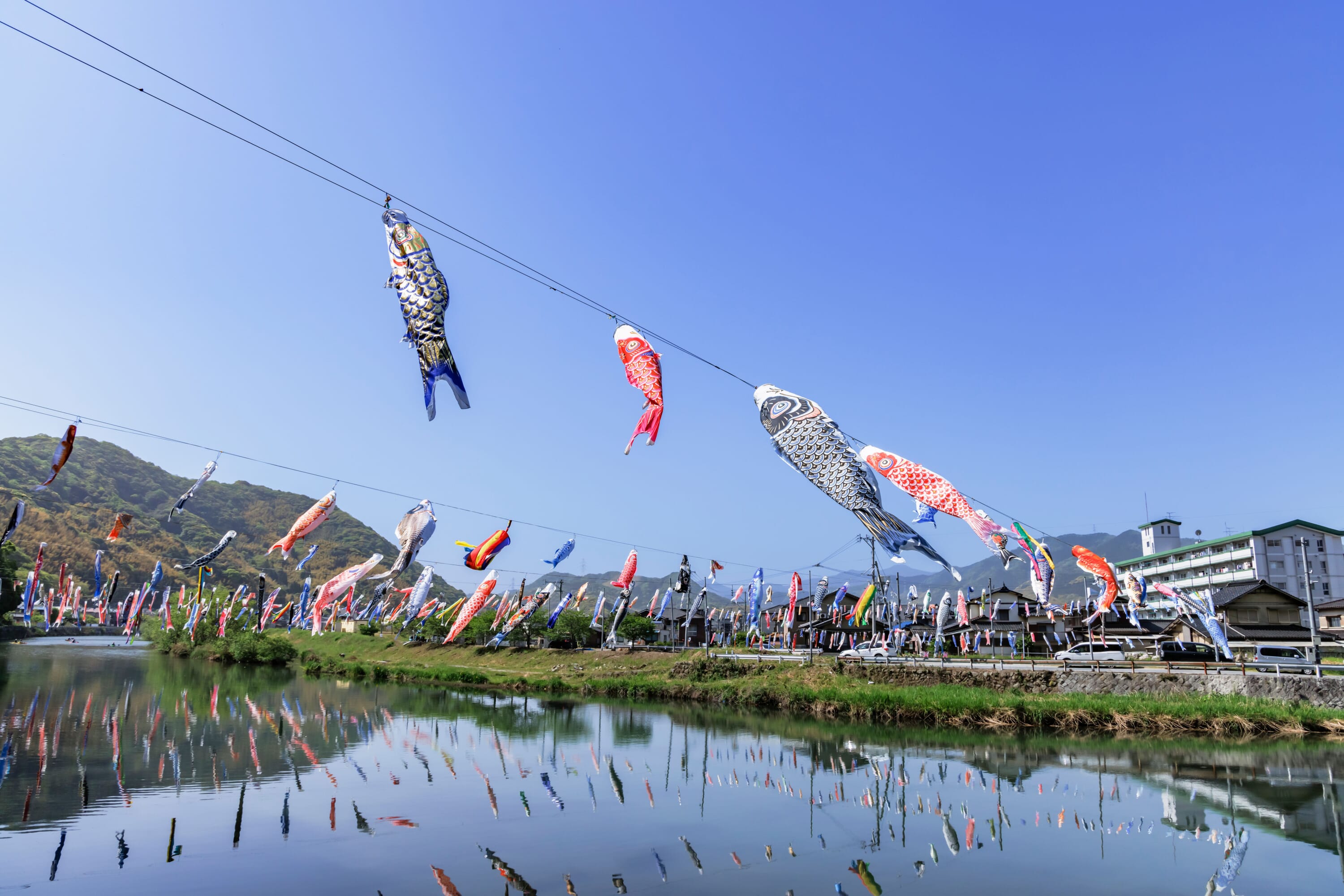
Murasaki-gawa koinobori matsuri
Tokuriki Arashiyamaguchi Station: Carp Streamers and Rustling Bamboo
It’s said that Hosokawa Tadaoki, the feudal lord who built Kokura Castle, was fond of the scenery around Sakurabashi, a nearby bridge spanning the Murasaki River. To him, it resembled the Arashiyama area of his beloved Kyoto, city of his birth and youth. According to the story, Tadaoki’s father, Hosokawa Fujitaka, brought cherry trees from Arashiyama and planted them on a hill along the river. Now, that hill is known as Koarashiyama, or “little Arashiyama.”
Connect with the historical figure by admiring the landscape he so loved. Walking trails border both sides of the river, which is particularly spectacular during spring’s Murasakigawa Koinobori Matsuri, a festival that sees hundreds of carp streamers dancing in the wind above the river. If wandering beneath leafy bamboo foliage as it whispers in the wind is up your alley, know that an emerald-green paradise awaits at the Ouma Chikurin Bamboo Grove Park. From Tokuriki Arashiyamaguchi Station, a bus will take you partway, but you’ll need to walk the final 20 minutes to the park.
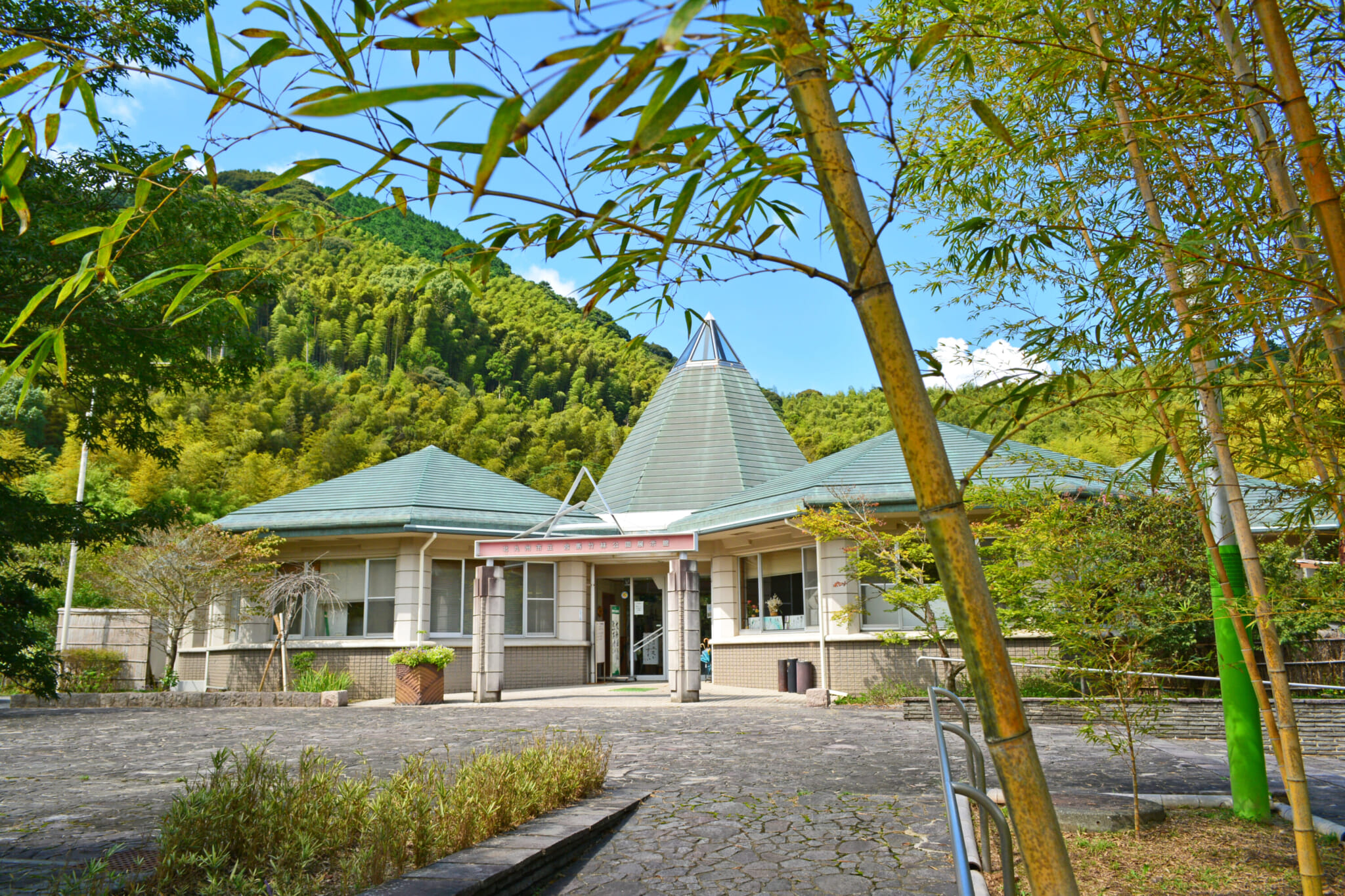
Ouma Chikurin Bamboo Grove Park
Kikugaoka Station: Starting Point for Further Adventures
From Tokuriki Arashiyamaguchi Station, just as it appears you’re headed for the hills, the monorail makes a hard turn to the east before navigating southeast and crossing the Shii River on its way to Kikugaoka, the final station. This is far from the end of the line for your travels, however. Transfer to the Hitahikosan Line at nearby JR Kyushu Shiikoen Station and head to Ishiharamachi Station, where the entrance to the Hiraodai karst fields is within walking distance. One of Japan’s three major karst terrains, Hiraodai is set up to allow visitors the chance to experience these karst formations up close.

Hiraodai karst fields
Kitakyushu Monorail: Your Key to the City
This is but a fraction of what there is to enjoy. Ride the line from start to finish. Double back to explore each station area. Stop at eateries along the way to sample fantastic local dishes like yaki udon (stir-fried udon) and Kokura niku udon (beef and udon). Transfer to a bus or hire a taxi and get your boots ready for a day of hiking, perhaps to the three-tiered Sugao Falls. Let the Kitakyushu Monorail be your guide as you become acquainted with this dynamic part of the city.
More Info
For more information about traveling on the Kitakyushu Monorail, please visit https://monotabi.jp/.
This article was originally published in the TW September-October 2023 issue

